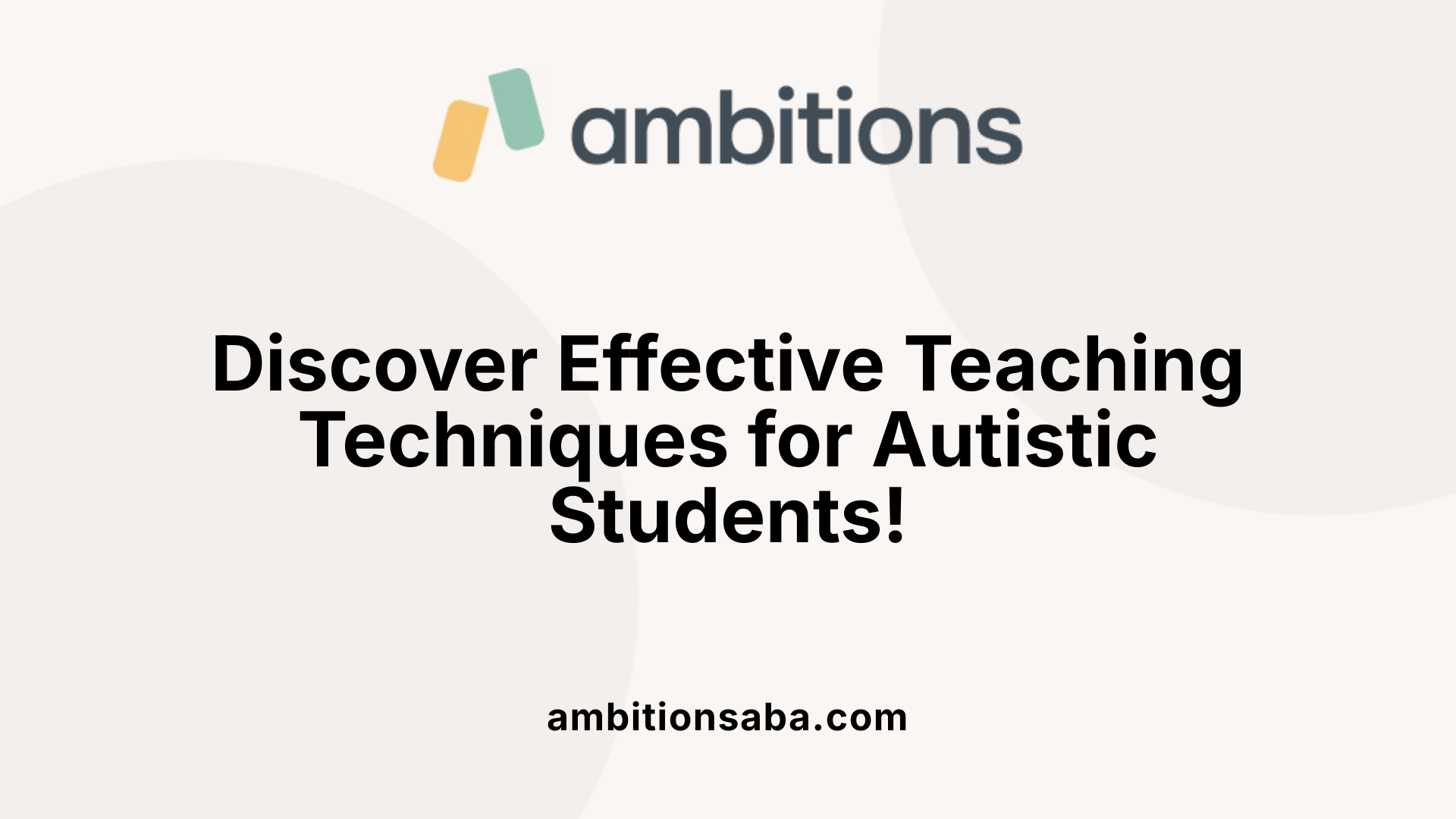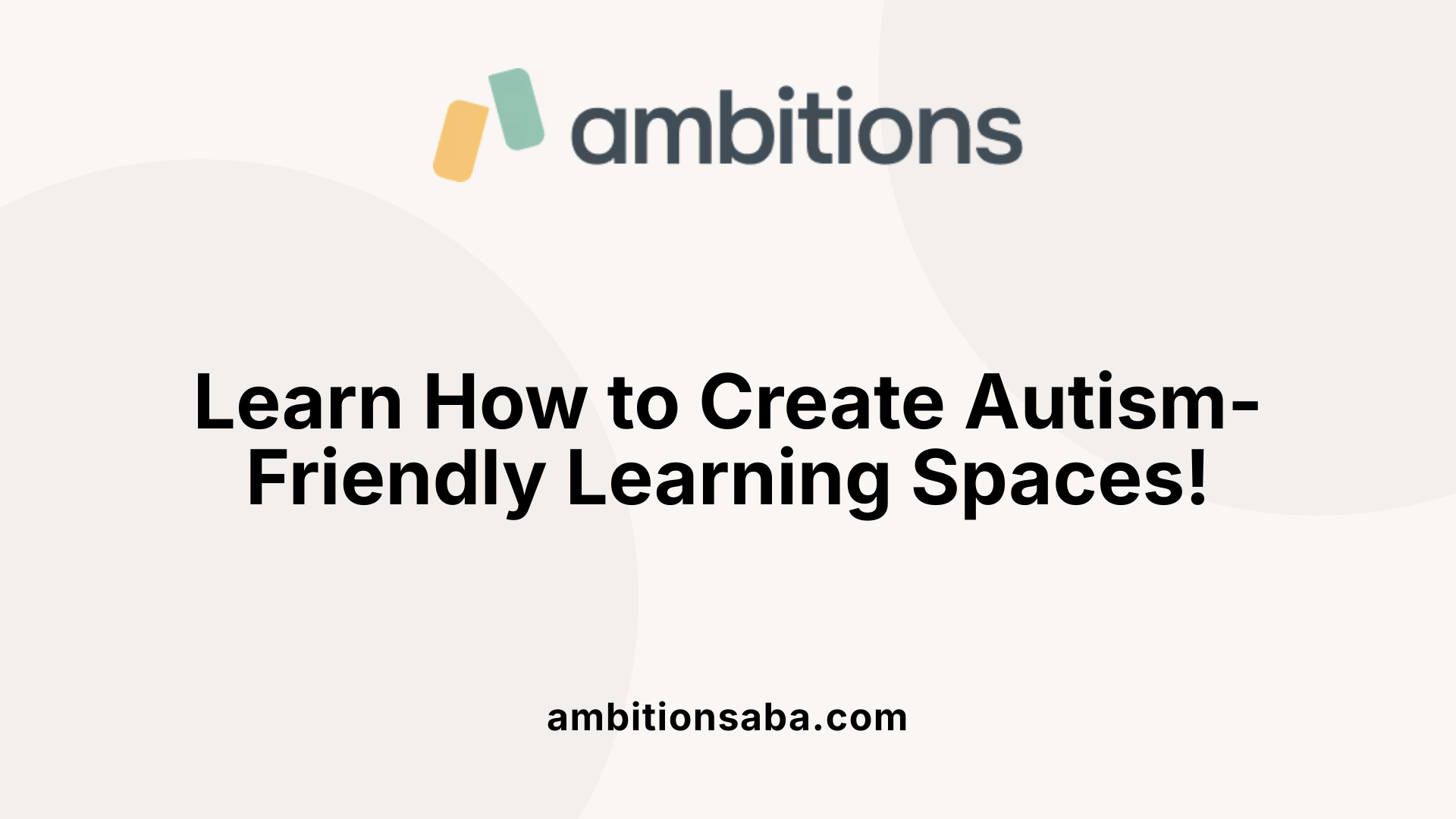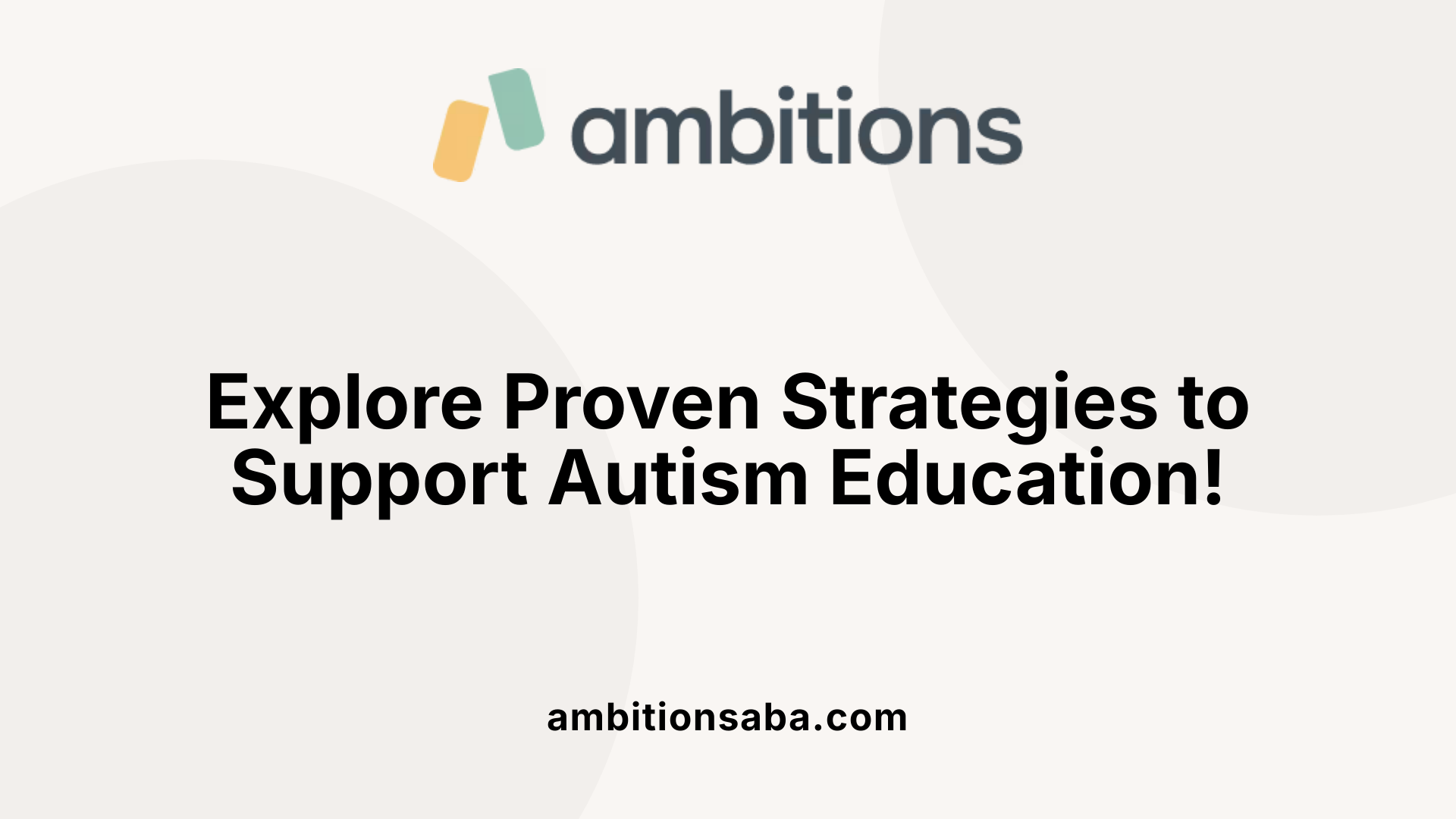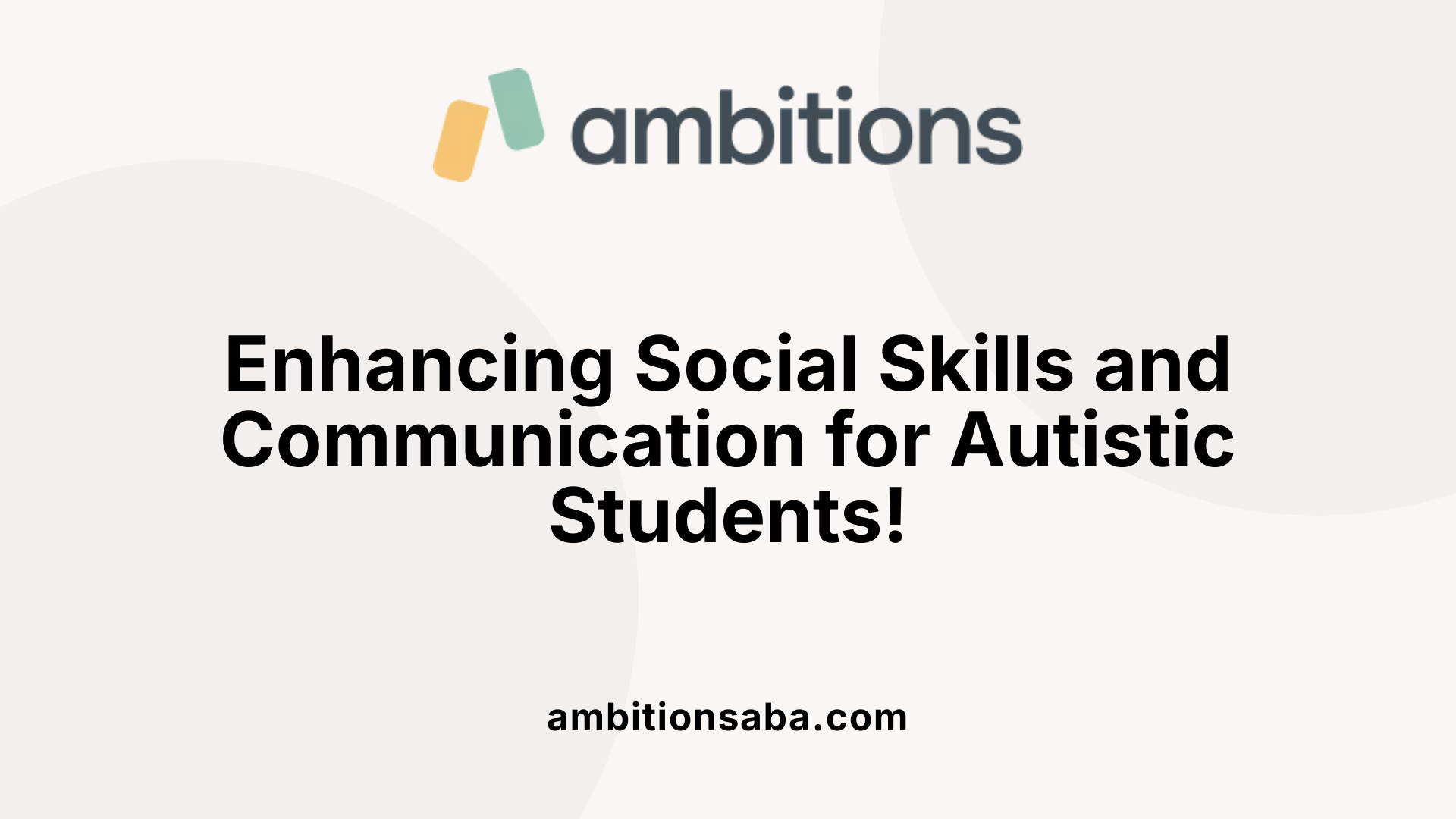Enhancing Adaptability Through Home-Based ABA
Introduction to Autism-Friendly Classroom Strategies
Developing an autism-friendly classroom requires thoughtful consideration of the unique needs of students on the autism spectrum. Educators are tasked with implementing evidence-based strategies to foster an inclusive educational environment that supports both learning and social interaction. This article outlines essential techniques and modifications to enhance the learning experiences of autistic students, ensuring they can thrive alongside their peers.
Understanding the Best Autism Teaching Methods

What are the best autism teaching methods?
The most effective teaching methods for children with autism prioritize visual supports, structured routines, and engaging hands-on activities. Visual aids, such as visual schedules, can significantly reduce anxiety while helping students understand their daily activities. For instance, using 'first-then' boards enables immediate clarity on what tasks need to be completed, subsequently enhancing task compliance.
Additionally, incorporating a child's special interests can provide context to learning, making lessons more relatable and motivating. Utilizing evidence-based approaches, such as Applied Behavior Analysis (ABA), allows educators to reinforce positive behaviors and enhance communication skills.
Structured environments rich in routine, along with dedicated social skills training sessions, facilitate improved communication and social understanding among peers. Supporting emotional well-being is equally vital, as it nurtures a conducive atmosphere for learning. Adjusting lesson plans to cater to individual preferences ensures each autistic student feels valued and engaged.
Ultimately, embracing a flexible and individualized approach, which may include technology use or specific methods like TEACCH, allows educators to meet the diverse needs of autistic students effectively.
Adapting Classrooms to Accommodate Autism

How can classrooms be adapted to accommodate autism?
Classrooms can be adapted to accommodate autism through a focused approach on structured routines and sensory sensitivities. By establishing clear and consistent schedules, educators can create an environment that provides predictability, helping students feel secure and less anxious about transitions between activities.
Teachers should work closely with parents to gain insight into each child’s unique sensory sensitivities. Common triggers include loud noises, bright lights, and strong scents, which can cause discomfort for students on the autism spectrum. To address this,
- Implement sensory-friendly elements: Use noise-canceling headphones, soft lighting, or designated quiet areas to help students self-regulate in overwhelming situations.
- Integrate interests: By incorporating topics that resonate with autistic students into lessons—such as using their favorite characters in math problems or their hobbies during reading sessions—teachers can significantly boost engagement and motivation.
Visual supports play a crucial role in comprehension. Using concrete visual aids—like picture schedules or charts—can help clarify expectations, assist with following instructions, and minimize confusion regarding classroom rules and activities.
Additionally, fostering social skills through structured peer interaction activities enables autistic children to practice communication and engagement, enhancing their overall classroom experience. Incorporating flexible teaching styles, such as alternative exam formats, ensures that autistic students can navigate both academic and social challenges effectively.
Creating an Autism-Friendly Classroom Environment

How do I make my classroom autism-friendly?
To create an autism-friendly classroom, begin by establishing a calm and structured environment. Clear routines are essential to help students anticipate what comes next, reducing anxiety and making transitions smoother. Visual schedules and aids, such as picture cards, play a crucial role in enhancing understanding and navigating daily activities.
Calm and structured environment
Incorporate movement into lessons to keep students engaged while allowing them to manage frustration. Regular breaks can help students recharge and maintain focus, promoting a productive atmosphere where they feel comfortable participating. Tailoring the curriculum to meet individual learning needs ensures that progress is prioritized over perfection, fostering a supportive learning pace.
Visual supports
Utilizing visual supports such as charts and color-coded timetables aids comprehension for autistic students, many of whom thrive on visual learning. Implementing First-Then boards can also clarify expectations and help with task sequencing.
Sensory tools
Integrate sensory tools and flexible seating options like bean bags and wobble cushions to accommodate diverse sensory requirements. These adjustments, alongside calming materials such as noise-canceling headphones, contribute to an environment conducive to learning and emotional regulation.
Effective Research-Based Teaching Strategies

What strategies are effective for teaching students with autism based on research?
Effective teaching strategies for students with autism are multifaceted, emphasizing a calm and positive environment that models appropriate behavior. By fostering a respectful engagement with students, educators can significantly enhance learning experiences.
Modeling Behaviors
Modeling respectful interactions and behavior creates a nurturing atmosphere. This approach encourages students to engage positively, learning from demonstrations rather than just verbal instructions. Building rapport through gentle and direct communication facilitates understanding.
Clear Routines
Establishing clear and structured routines is vital. Visual schedules and clear expectations help students with autism anticipate daily activities and transitions. When students are prepared for changes, anxiety is reduced, promoting independence and a sense of security within the classroom environment.
Sensory Management
Effective sensory management is crucial in creating an autism-friendly classroom. Incorporating sensory-friendly spaces equipped with calming tools, like noise-canceling headphones, supports students in managing sensory overload. Regular sensory breaks also allow students to recharge, maintaining focus throughout the day.
Integrating evidence-based practices such as Applied Behavior Analysis (ABA) enhances engagement and reinforces positive behaviors, tailoring support for each student’s unique needs. Understanding individual preferences through 'About Me' forms can further personalize education, fostering a more inclusive learning environment.
Behavioral Strategies for Autism
What behavior strategies are effective for students with autism?
Effective behavior strategies for students with autism encompass a variety of techniques that foster a supportive learning environment. One notable strategy is positive reinforcement, which correlates desired behaviors with rewards, encouraging children to repeat these behaviors. This approach can include a token economy or simple praise that celebrates their strengths and successes.
A structured choice environment is another critical strategy. By offering limited options (two to three at most), educators can enhance students' sense of control while avoiding overwhelming feelings — ultimately reducing frustration. This empowers students with autism to make decisions that align with their preferences, promoting engagement and independence.
Creating calm-down spaces is equally essential in managing emotions. These designated areas allow students to take breaks when feeling overwhelmed or dysregulated. Equipped with sensory tools, such spaces can help students self-regulate and return to class activities more focused and relaxed. Incorporating these strategies can contribute significantly to managing behavior and enhancing the educational experience for children on the autism spectrum.
Supporting Social Interaction and Communication

Social Skills Training
Social skills training is essential for supporting students with autism. These programs focus on teaching appropriate ways to interact with peers, helping students understand social cues and navigate social situations effectively. Activities such as role-playing and structured exercises provide opportunities for practice in a safe environment.
Peer Interaction
Creating opportunities for peer interaction is vital. Group activities and buddy systems encourage autistic students to engage with their classmates, fostering friendships and collaboration. Pairing students with positive role models helps enhance social exchanges, promoting inclusion within the classroom.
Using Visual Aids
Visual aids play a crucial role in enhancing communication for autistic students. Tools like emotion cards and visual prompts clarify expectations and help students articulate their feelings and responses. Utilizing visual schedules for social activities provides clear guidance, thus reducing anxiety and aiding comprehension during interactions.
| Strategy | Description | Benefits |
|---|---|---|
| Social Skills Training | Structured lessons on interaction | Improves understanding of social context |
| Peer Interaction | Buddy systems and group activities | Fosters friendships and reduces isolation |
| Visual Aids | Use of emotion cards and visual schedules | Enhances communication and comprehension |
Leveraging Sensory-Friendly Classroom Designs
Sensory Tools and Spaces
Creating a sensory-friendly classroom involves integrating specific tools and spaces tailored to the needs of autistic students. Designated sensory areas equipped with fidget toys, noise-canceling headphones, or weighted items allow students to self-regulate during overwhelming moments. These tools can significantly help in maintaining focus while reducing anxiety during lessons.
Flexible Seating Arrangements
Flexible seating options like bean bags and wobble cushions cater to diverse sensory needs, promoting comfort and engagement. Such arrangements allow students to choose seating that matches their comfort level, which can enhance their ability to concentrate on the task at hand. A variety of seating choices also encourages movement, which is crucial for managing excess energy.
Calming Elements
Incorporating calming elements such as low lighting, soothing sounds, or scents like lavender can create a more focused learning environment. A well-lit room, utilizing soft lights instead of harsh fluorescents, helps reduce sensory distractions. Additionally, using white noise or gentle music can enhance concentration, allowing students to thrive in a nurturing educational space.
| Topic | Benefits | Examples |
|---|---|---|
| Sensory Tools and Spaces | Self-regulation, reduced anxiety | Fidget toys, noise-canceling headphones |
| Flexible Seating | Comfort, increased engagement | Bean bags, wobble cushions |
| Calming Elements | Enhanced focus, reduced distractions | Soft lighting, soothing sounds |
Fostering Inclusion and Peer Support
Inclusive Teaching Methods
Creating an inclusive classroom requires adaptive teaching strategies that meet the diverse needs of all students, particularly those with autism. Tailoring lessons around students' interests can enhance engagement, while visual aids help clarify complex ideas, making learning more tangible.
Structured Peer Interactions
Structured peer interactions play a crucial role in developing social skills among students with autism. Activities such as group projects or buddy systems allow for meaningful collaboration and foster friendships, helping students practice communication and social interaction in a supportive environment.
Collaboration with Families
Collaboration with families is vital for effective inclusion. Regular communication with parents provides insights into their child’s preferences and needs, fostering a team approach to education. Including families in discussions encourages shared strategies for promoting social behaviors, ensuring that students receive consistent support both at school and at home.
| Focus Area | Strategy | Benefits |
|---|---|---|
| Inclusive Teaching Methods | Use of interests and visual aids | Enhances engagement and understanding |
| Structured Peer Interactions | Buddy systems and group activities | Develops social skills and friendships |
| Collaboration with Families | Regular updates and strategy sharing | Promotes consistency and tailored support |
Empowering autistic students and ensuring they can navigate social landscapes is fundamental to their educational experience.
Using Visual Aids and Technology to Enhance Learning
Visual Learning Tools
Visual aids such as picture schedules, charts, and emotion cards are essential for supporting students with autism. These tools enhance understanding by providing clear, concrete representations of tasks and expectations. For example, visual schedules help students anticipate daily routines, reducing anxiety during transitions. Incorporating color-coded systems can also aid in organizing tasks for better comprehension.
Technology as Support
Technology plays a vital role in accommodating diverse learning needs. Tools like speech-to-text software can assist students struggling with writing, ensuring they focus on content rather than the mechanics of writing. Additionally, apps that feature visual timers and reminders can help manage time during activities, promoting independence and effective time management.
Individualized Learning
It's crucial to tailor learning experiences to each student's needs. Using individualized learning plans that incorporate students' interests can significantly enhance engagement. By integrating their passions into lessons, educators can maintain interest and motivation, thus improving overall learning outcomes for students with autism. Providing choices in learning activities fosters a sense of autonomy, further benefiting student empowerment.
Individualized and Evidence-Based Approaches
What is Applied Behavior Analysis (ABA)?
Applied Behavior Analysis (ABA) is a widely recognized and effective approach to support individuals with autism. This method focuses on understanding and reinforcing positive behaviors while minimizing negative ones. ABA incorporates systematic and data-driven strategies to improve vital skills, such as communication and socialization, thereby fostering greater independence in students.
How do Individualized Education Plans (IEPs) help students?
Individualized Education Plans (IEPs) are tailored educational approaches designed to meet the unique needs of students with disabilities, including autism. These plans outline specific learning goals and the support necessary to achieve them. IEPs encourage regular collaboration between educators, parents, and specialists to create a personalized roadmap for academic and social success.
What is the TEACCH method?
The TEACCH method (Treatment and Education of Autistic and Related Communication Handicapped Children) emphasizes structure and visual supports to enhance learning and independence for individuals with autism. This method involves organizing the environment, using visual schedules, and incorporating individual interests to foster engagement. TEACCH promotes independence, helping students transition smoothly into various learning environments.
| Approach | Description | Benefits |
|---|---|---|
| Applied Behavior Analysis (ABA) | Reinforces positive behaviors and teaches skills through systematic strategies. | Enhances communication and social skills. |
| Individualized Education Plans (IEPs) | Personalized educational goals and strategies tailored to student needs. | Promotes collaboration and focus on individual strengths. |
| TEACCH method | Structured approach using visual supports and individualized interests. | Fosters independence and smoother transitions. |
Conclusion
Creating an autism-friendly classroom is a dynamic process that involves continuously adapting strategies to meet the diverse needs of autistic students. By incorporating structured routines, sensory-sensitive modifications, and evidence-based teaching methods, educators can foster an inclusive and supportive learning environment. As teachers, parents, and administrators collaborate, a deeper understanding of autism-friendly practices can significantly enhance the educational experiences of all children, promoting mutual respect and understanding in diverse classroom settings.
References
- Autism in the classroom: Strategies for success
- Effective Inclusive Classroom Strategies for Teaching Students with ...
- Supporting Students with Autism: 10 Ideas for Inclusive Classrooms
- Autism-Friendly Classroom Tips - Magnet ABA
- Creating an Autism-Friendly Classroom - Fun & Function
- Autism-Friendly Classroom Strategies - Ambitions ABA Therapy
- How to Set Up an Autism Classroom
- 24 Classroom Activities for Kids with Autism | Waterford.org
- [PDF] Classroom Strategies for Students with Autism.pdf - Answers4Families
- 11 Ways to Build an Autism-Inclusive Classroom

